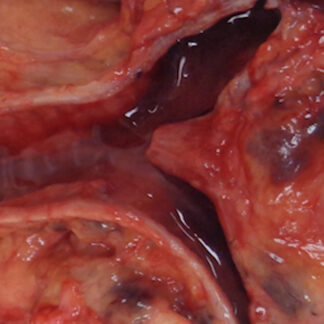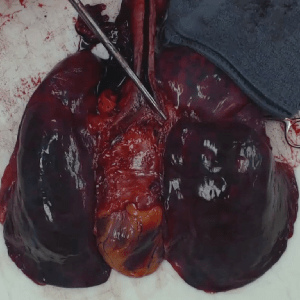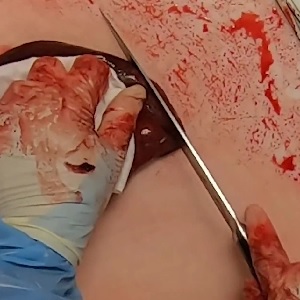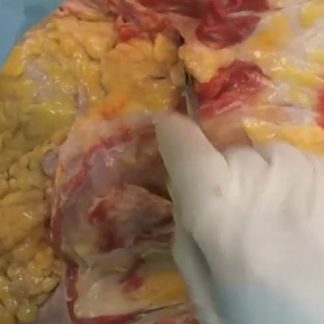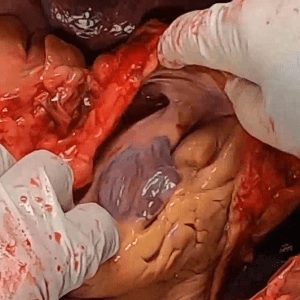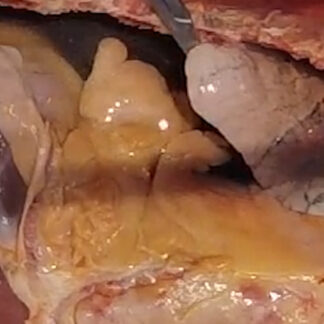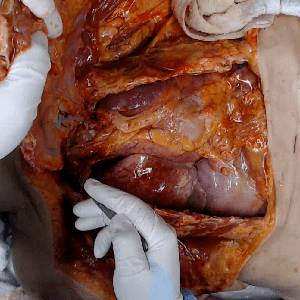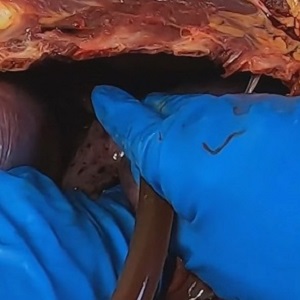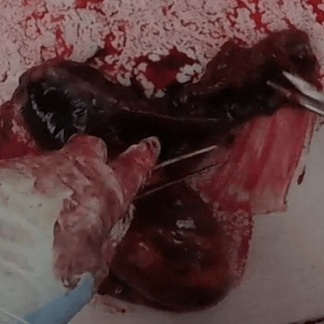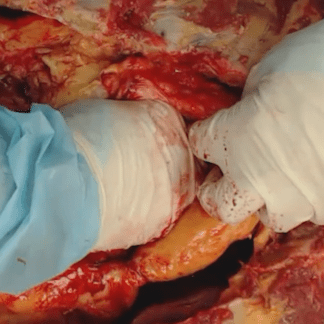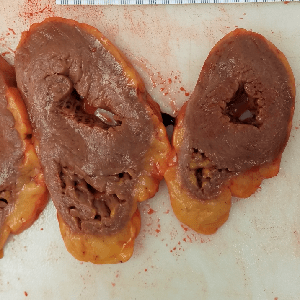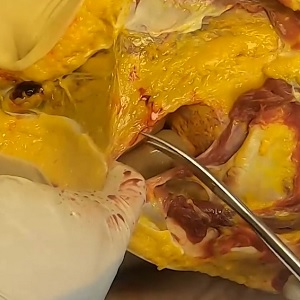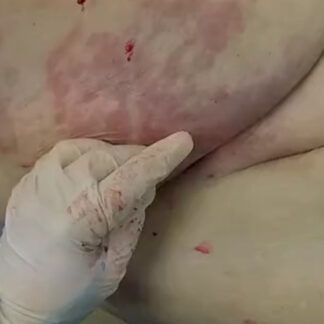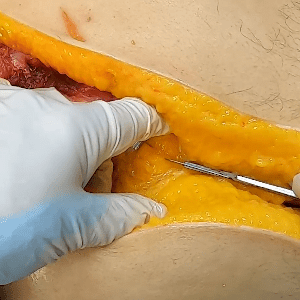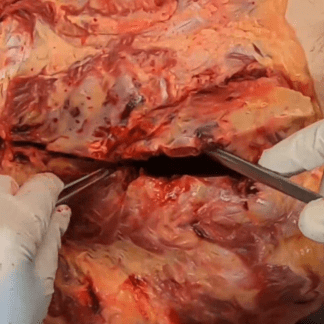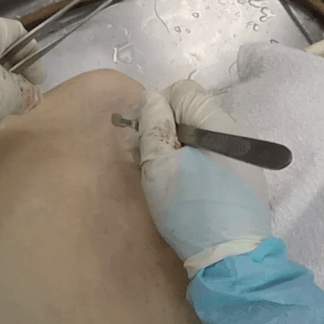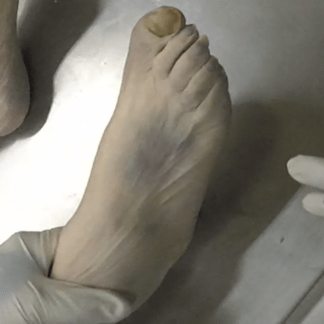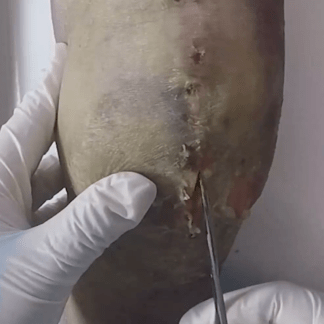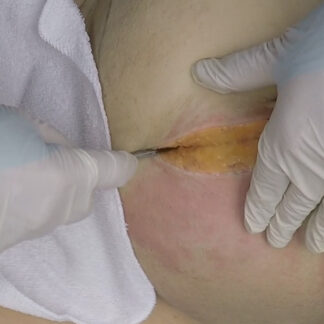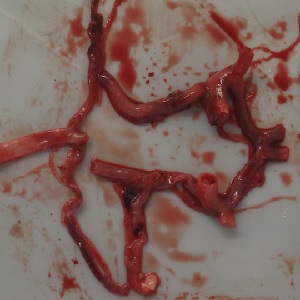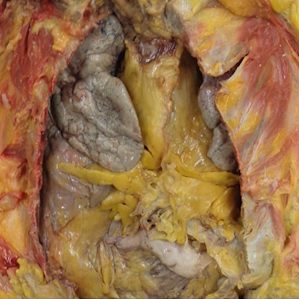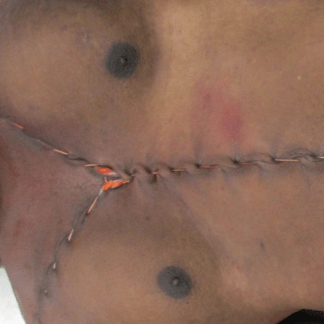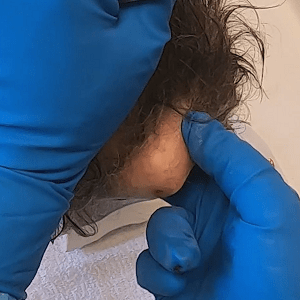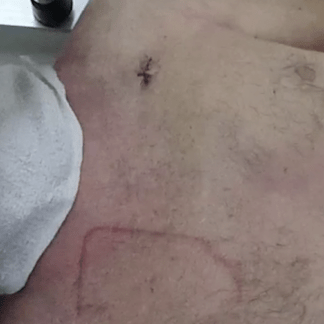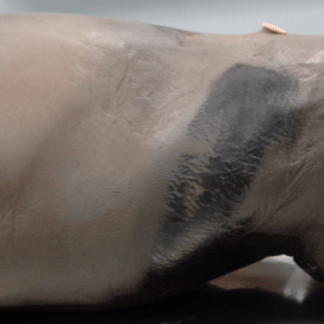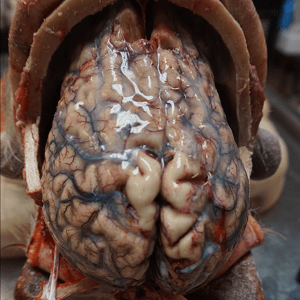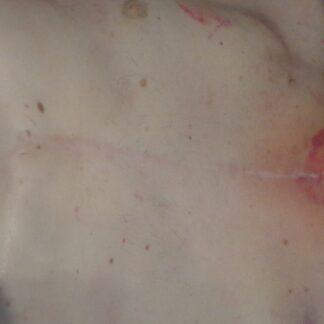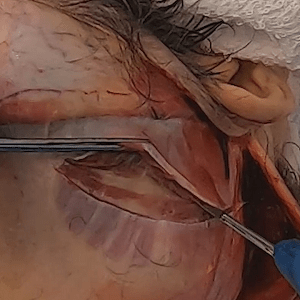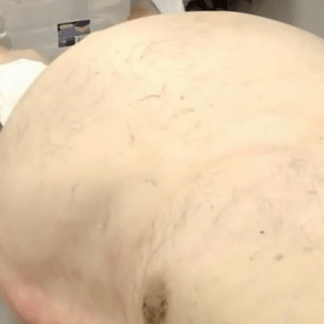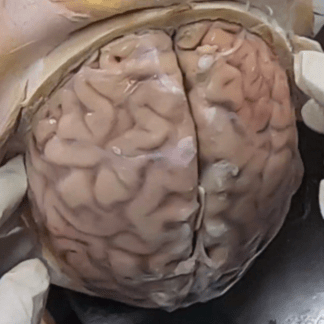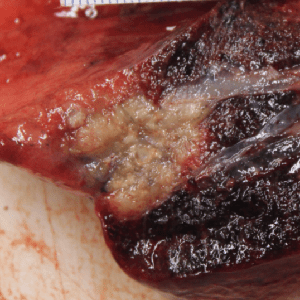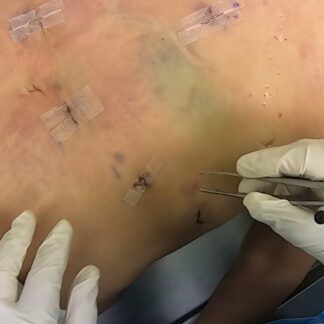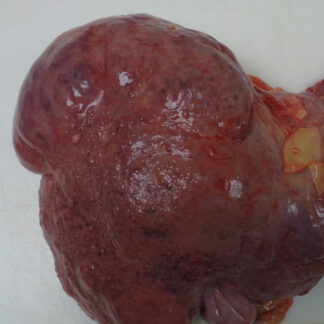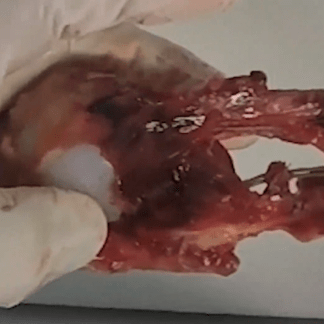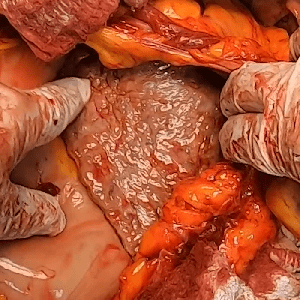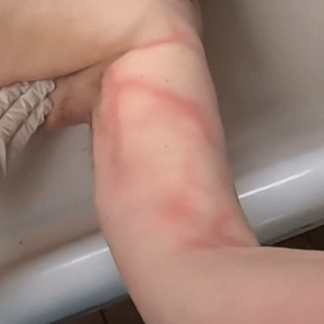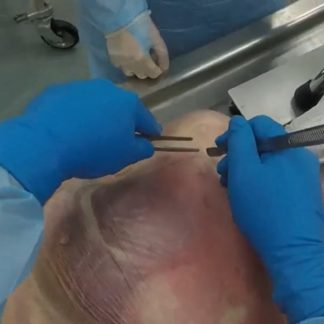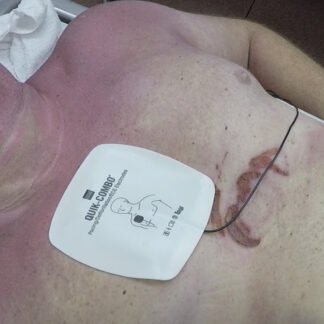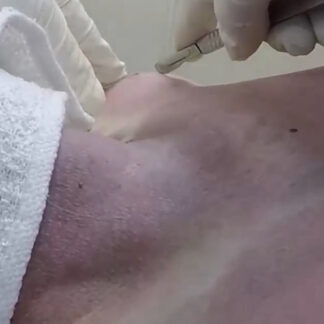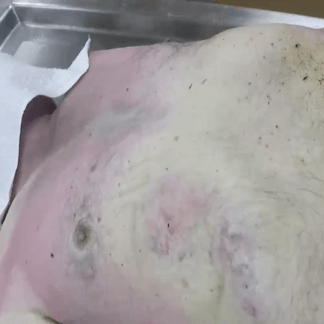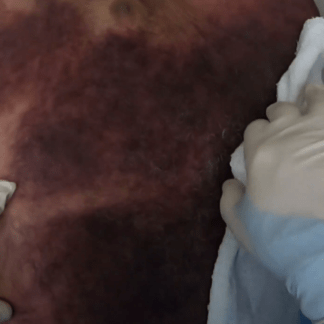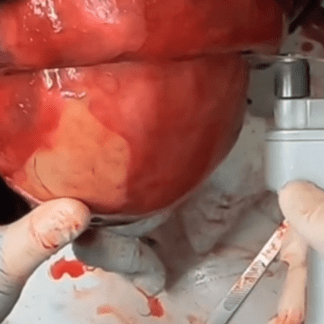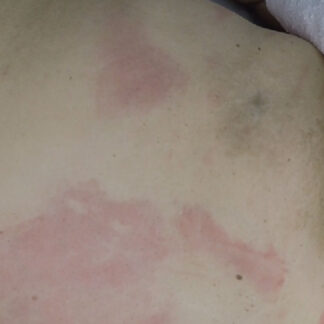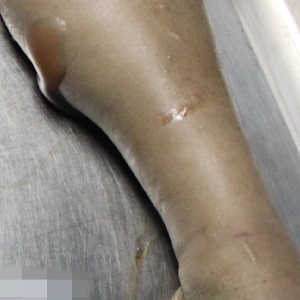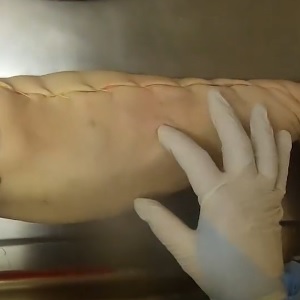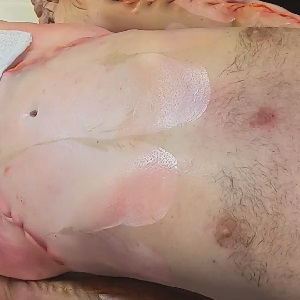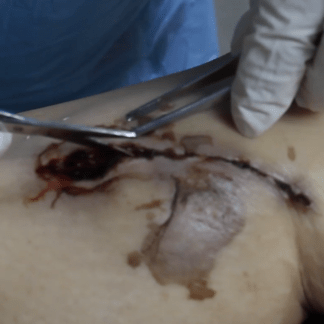![]()
![]()
Clique em
![]()
no canto
inferior direito dos vídeos para ativar as legendas.
Use o navegador Chrome para traduzir texto.
Clinical Panels
Desktop devices
recommended.
Please switch to a larger device
or visit the Library.
Medical Devices
Critical Care
General Medicine
•General
•Ischemic heart disease
•Hypertension
•Gastroenterology
•Slow gastrointestinal bleed
Forensics and Postmortem Change
Ethics
Medical Devices
External Devices
↓
-
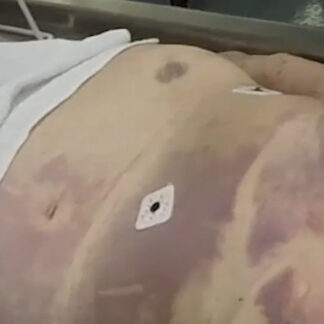
Case 1 Part 1
External exam. Anterior livor mortis. EKG leads.
-
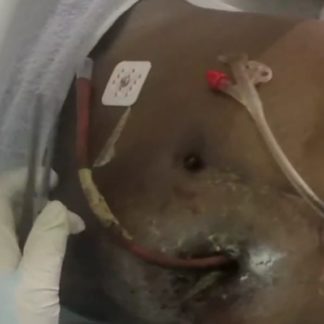
Case 2 Part 1
Gastrostomy tube. Jejunostomy tube.
-
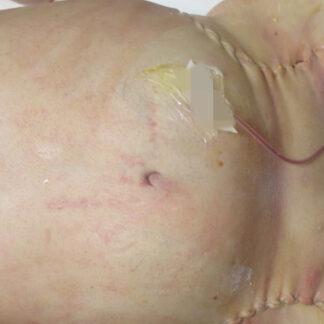
Case 8 Part 2
External exam. Peritoneal dialysis catheter. Central venous access sites. Long bone donation.
-
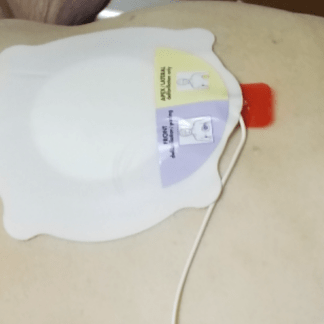
Case 11 Part 1
External exam. Left mastectomy. Obesity. Defibrillator pads. Intraosseous needle.
-
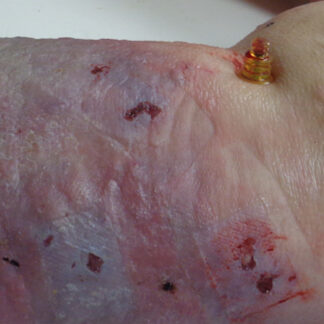
Case 13 Part 1
External exam. Intraosseous needle.
-
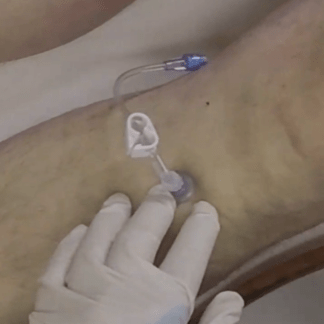
Case 14 Part 1
External exam. Intraosseous needle.
-
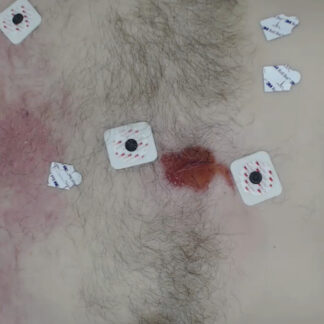
Case 33 Part 1
External exam. EKG leads.
-
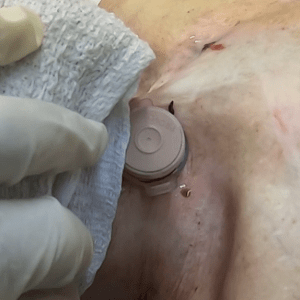
Case 40 Part 1
External exam. Tracheostomy with scarring. Muscle graft donor site. Gastrostomy tube.
Medical Devices
Internal Devices
↑ ↓
-
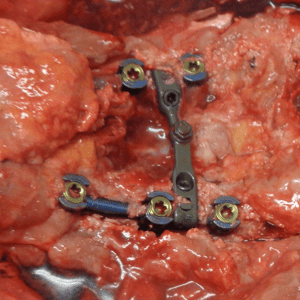
Case 6 Part 4
Spinal cage.
-
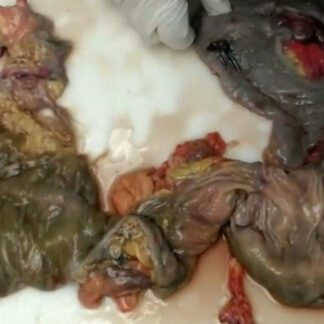
Case 10 Part 7
Biopsy site. Colonoscopy clips.
-
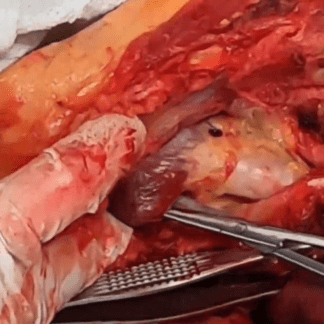
Case 17 Part 6
Endotracheal tube.
-
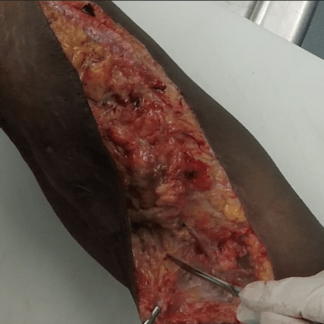
Case 27 Part 2
Left arm dissection. HeRO graft.
-
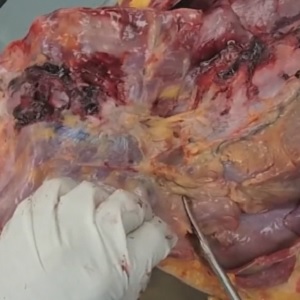
Case 27 Part 4
Removal of chest plate. Rib fractures from CPR.
-
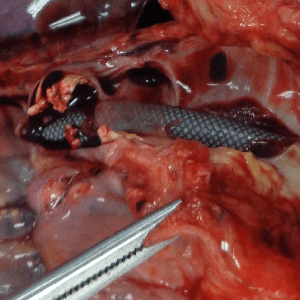
Case 27 Part 5
HeRO graft. Near-total obstruction of superior vena cava orifice.
-
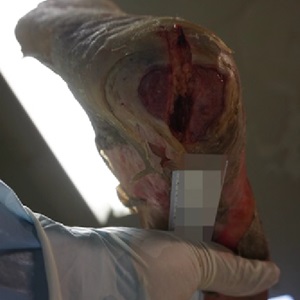
Case 30 Part 4
Heel decubitus ulcer
-
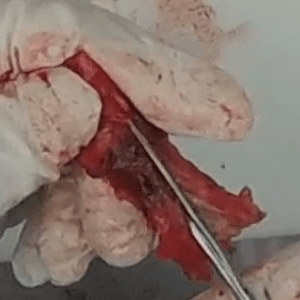
Case 34 Part 5
Iliofemoral artery with iatrogenic defect and stent.
-
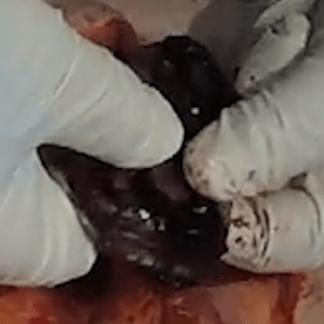
Case 37 Part 2
Pacemaker retrieval. Assessment of pacemaker surgical site.
Critical Care
Pulmonary edema
↑ ↓
Critical Care
Pleural effusion
↑ ↓
Critical Care
Ischemic heart disease
↑ ↓
-
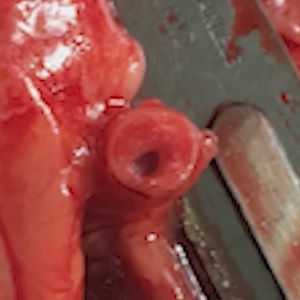
Case 2 Part 3
Severe 2-vessel coronary artery disease.
-
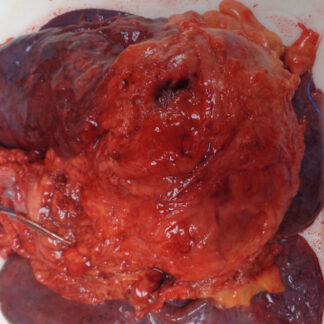
Case 13 Part 9
Coronary artery bypass graft surgery. Pacemaker-defibrillator lead insertions.
-
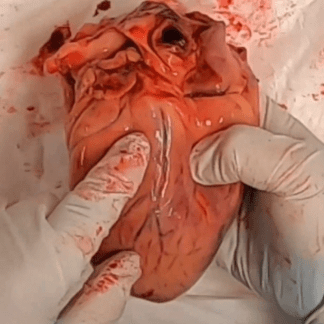
Case 17 Part 5
Heart — basic anatomy. Coronary artery blockage.
-
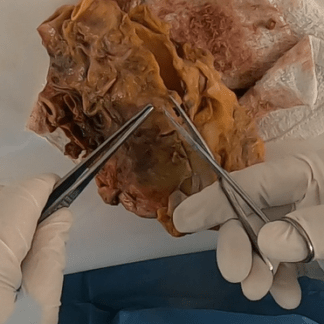
Case 24 Part 3
Coronary artery bypass graft surgery — ostial scarring with graft closure.
-
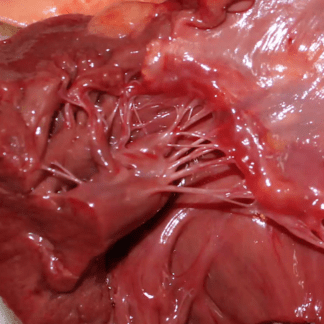
Case 28 Part 3
Acute myocardial infarction.
-
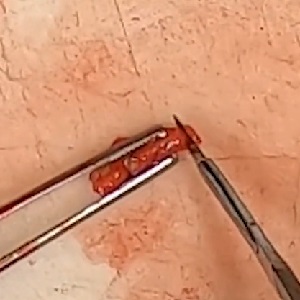
Case 42 Part 5
Severe coronary atherosclerosis.
Critical Care
Pulmonary embolism
↑ ↓
-
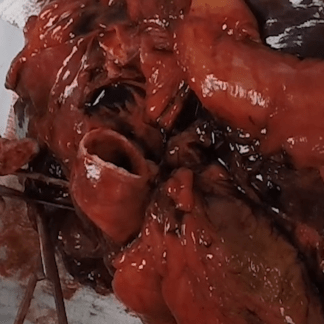
Case 12 Part 4
Acute pulmonary embolism.
-
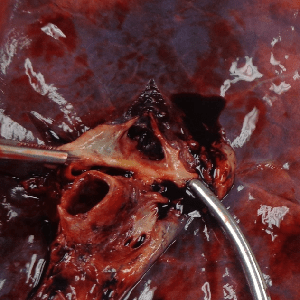
Case 27 Part 8
Chronic pulmonary embolism. Pulmonary infarcts.
-
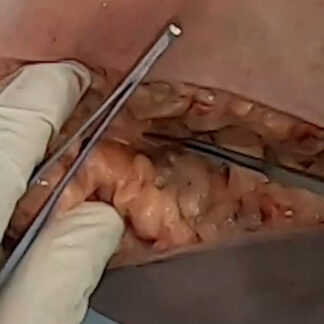
Case 29 Part 2
Lower extremity soft tissue edema.
-
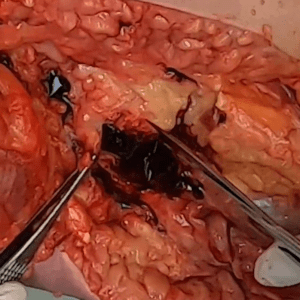
Case 29 Part 3
Deep venous thrombosis.
-
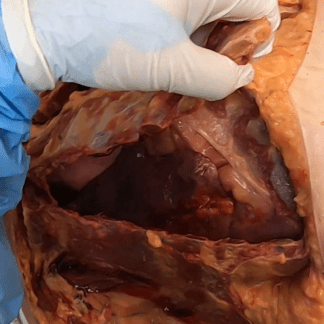
Case 29 Part 4
Acute pulmonary embolism.
-
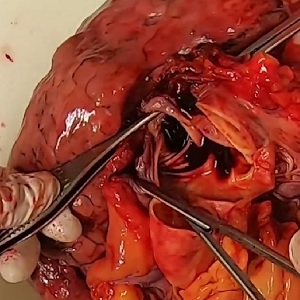
Case 42 Part 2
Acute pulmonary embolism.
-
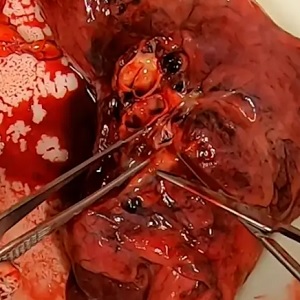
Case 42 Part 3
Subacute pulmonary embolism.
Critical Care
Hypertension
↑ ↓
Critical Care
Shock
↑ ↓
Trauma
Resuscitation
↑ ↓
Trauma
Falls
↑ ↓
Trauma
Head injuries
↑ ↓
Trauma
Motor Vehicle Accident
↑ ↓
Surgery
Adverse Events
↑ ↓
-
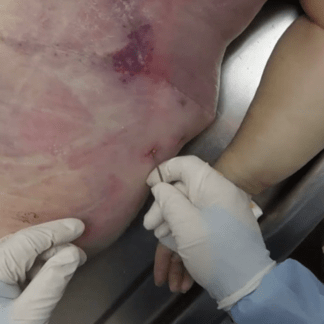
Case 6 Part 2
Spine exposure.
-
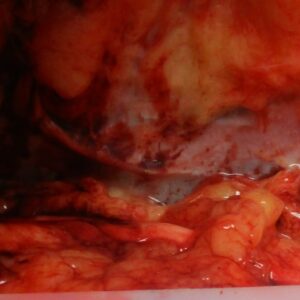
Case 7 Part 5
Inferior vena cava filter.
-
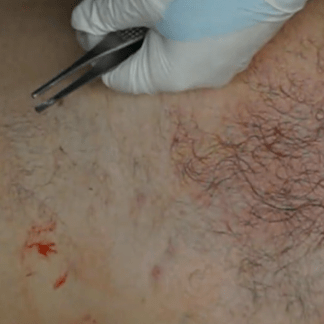
Case 8 Part 3
Bowel infarct.
-
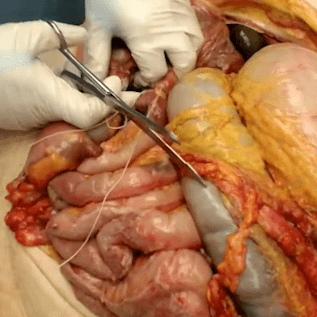
Case 10 Part 4
Peritonitis.
-
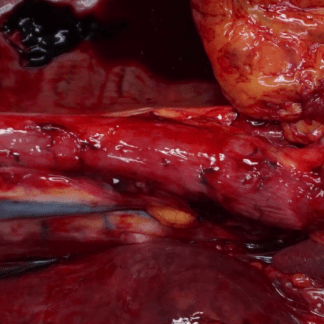
Case 23 Part 4
Roux-en-Y anatomy.
-
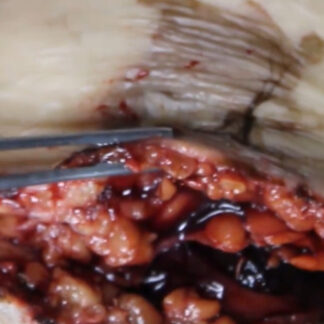
Case 28 Part 2
Compartment syndrome.
-
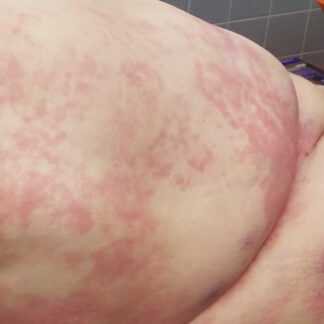
Case 34 Part 1
External exam. Obesity. Cardiac catheterization femoral access site.
-

Case 37 Part 2
Pacemaker retrieval. Assessment of pacemaker surgical site.
-
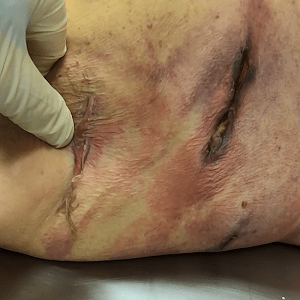
Case 38 Part 1
External exam. VATS procedure.
-

Case 40 Part 1
External exam. Tracheostomy with scarring. Muscle graft donor site. Gastrostomy tube.
-
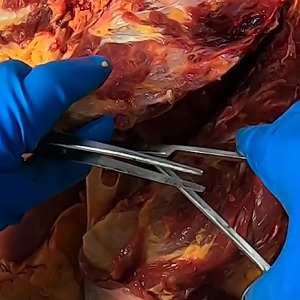
Case 46 Part 2
Subacute pacemaker lead perforation.
General Medicine
Cardiology
↑ ↓
General Medicine
Neurology
↑ ↓
General Medicine
Gastroenterology - slow gastrointestinal bleed
↑ ↓
General Medicine
Kidney disease
↑ ↓
-

Case 8 Part 2
External exam. Peritoneal dialysis catheter. Central venous access sites. Long bone donation.
-
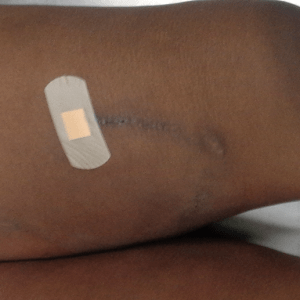
Case 27 Part 1
External exam. Multiple dialysis access surgeries.
-

Case 37 Part 2
Pacemaker retrieval. Assessment of pacemaker surgical site.
-
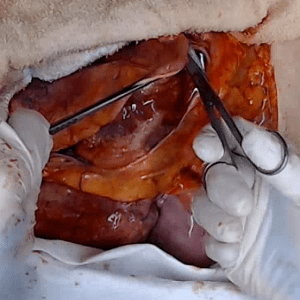
Case 41 Part 4
Uremic pericarditis.
-
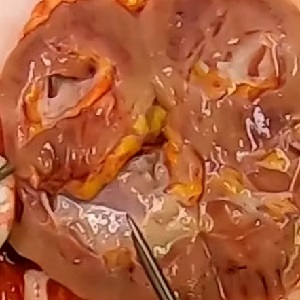
Case 44 Part 6
Hydroureter. Hydronephrosis.
-
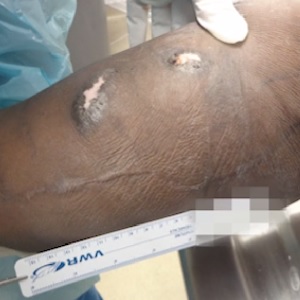
Case 48 Part 1
External exam. Arteriovenous fistula.
-
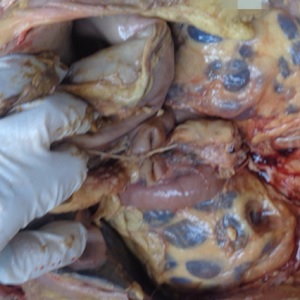
Case 48 Part 3
Polycystic kidney disease.
General Medicine
Tumors
↑ ↓
General Medicine
Obesity
↑ ↓
Obesity
Gastric bypass (Roux-en-Y) procedure
Obesity
General Medicine
Alcohol use disorder
↑ ↓
General Medicine
Diabetes
↑ ↓
Diabetes
Diabetic foot ulcer
Forensics and Postmortem Change
Decomposition
↑ ↓
Livor mortis - external
Livor mortis - internal
Livor mortis
Rigor mortis
Livor mortis
Scroll down for more ↓
Livor mortis
Skin slip
Livor mortis
Pressure blanching of livor mortis
Postmortem gas formation
Desiccation of CPR-related abrasions
Purge
Livor mortis
Pressure blanching of livor mortis
Marbling
Green discoloration of abdomen in right lower quadrant (putrefaction)
Skin slip
Desiccation
Moderate decomposition
Facial swelling
Conjunctival hemorrhage and swelling
Corneal clouding
Brain with moderate decomposition
Livor mortis
Pressure blanching of livor mortis
Skin slip
Desiccation
Bleb formation
Skin slip
Forensics and Postmortem Change
Homicide - Blunt force trauma
↑ ↓
Forensics and Postmortem Change
Toxicology
↑ ↓
Forensics and Postmortem Change
Tissue Donation
↑ ↓
Long bone donation
(Note visible wooden block replacing bone)
Long bone donation
Skin and soft tissue donation
Long bone donation
Skin donation
Medical Ethics
↑
How to talk to the family when they may have caused or contributed to the death.
Consequences of not communicating intraoperative hypotension to the post-operative care team.
What to do if the patient needs emergency care but refuses.
Balancing listening to the patient vs. following diagnostic studies.
Team communication in a patient with absent distal pulse and mental status change after a cardiac catheterization.
Provider boundaries -- who decides when a surgery is performed? What if the family insists it's necessary?
Evidence-based care -- consequences of operating on a mass without a tissue diagnosis.
Whose role is it to ensure the patient receives discharge medications?

